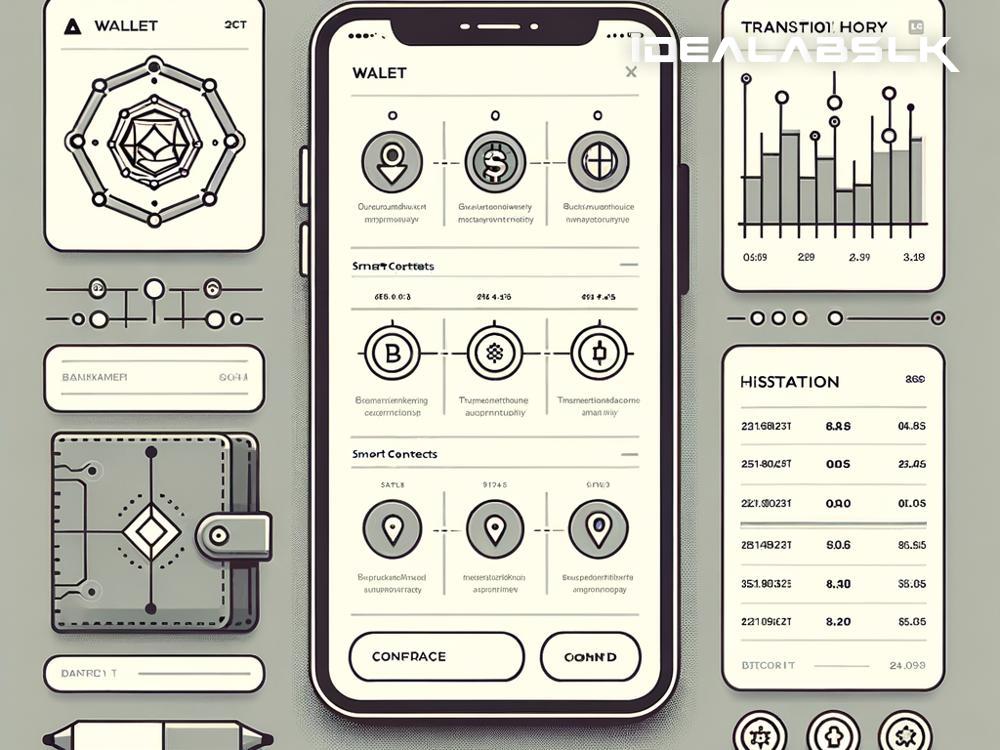Demystifying UI/UX Design in Blockchain-Based Applications
In our tech-friendly era, an engaging and intuitive user interface (UI) and user experience (UX) are not just buzzwords but the backbone of any successful digital application. As complex as blockchain technology may sound, the need for simplicity in blockchain-based applications cannot be overstated. This piece aims to unravel the mystery behind UI/UX design in blockchain applications, making this seemingly complex subject accessible to all.
What is UI/UX, And Why is it Important in Blockchain?
UI and UX are two terms that often travel together but mean different things. UI, or User Interface, is all about the look and layout of an application. It's what you see and interact with. UX, or User Experience, on the other hand, is about how smoothly and intuitively you can navigate through the app. It ensures that users find the application not only appealing but also functional and easy to use.
When it comes to blockchain-based applications, the importance of UI/UX cannot be underestimated. Blockchain technology, with its decentralized nature and cryptographic algorithms, can be daunting for the average user. A stellar UI/UX design makes this innovative technology accessible and usable for everyone, not just the tech-savvy crowd. The key lies in translating complex blockchain functionalities into user-friendly interfaces and experiences.
Simplifying Complexity: The Heart of Blockchain UI/UX Design
The primary challenge in blockchain UI/UX design is the simplification of complex processes. Whether it's managing digital assets in a wallet, executing smart contracts, or tracking transactions on a decentralized platform, the goal of UI/UX design is to make these processes as straightforward as possible. Here’s how designers are achieving that:
-
Clarity and Transparency: Clear instructions, intuitive navigation, and visible transaction processes help demystify blockchain operations. Users appreciate knowing what's happening behind the scenes without feeling overwhelmed by technical jargon.
-
Consistency and Familiarity: Incorporating design elements that users are already familiar with can enhance their comfort level. This could mean using common symbols, colors, and layout structures, making the learning curve less steep.
-
Security and Trust: Given the value and sensitivity of blockchain transactions, UI/UX must also prioritize conveying a sense of security and trust. Features like two-factor authentication or showing clear transaction statuses can offer users peace of mind.
The Role of User-Centered Design in Blockchain Applications
At the heart of effective UI/UX design for blockchain apps is a user-centered approach. This involves understanding the needs, behaviors, and pain points of the target audience. Here's why this approach is crucial:
- Accessibility: By focusing on the users, designers can ensure that the application is accessible to people with various levels of blockchain knowledge.
- Engagement: Engaging interfaces lead to higher user retention. An application that is a pleasure to use is one that keeps users coming back.
- Adoption: Simplified and intuitive UI/UX designs are key to widespread adoption. The easier it is to navigate blockchain applications, the more likely they are to be embraced by the masses.
Best Practices for Designing Blockchain UI/UX
To achieve an exceptional UI/UX for blockchain applications, here are some best practices to keep in mind:
-
Start with User Research: Understand your audience deeply. What are their preferences, fears, and expectations from a blockchain application?
-
Simplify Navigation: Avoid clutter at all costs. Aim for a clean, simple, and intuitive navigation structure.
-
Educate the User: Consider incorporating tutorial sections or tooltips that can help educate users about blockchain without leaving the application.
-
Iterate Based on Feedback: Launching your application is not the end. Collect user feedback and be prepared to make iterative improvements to the design.
-
Emphasize Security Features: Make sure users are aware of security features and feel confident in the safety of their transactions.
Conclusion
Designing for blockchain involves bridging the gap between complex technology and user-friendliness. Despite the challenges, effective UI/UX design can unlock the full potential of blockchain applications, making them accessible, engaging, and trusted by a broad audience. As blockchain technology continues to evolve, so too will the approaches to designing user interfaces and experiences that cater to the needs of diverse users. The future of blockchain applications lies in the hands of UI/UX designers who are ready to take on the task of simplifying complexity for the benefit of all users.

